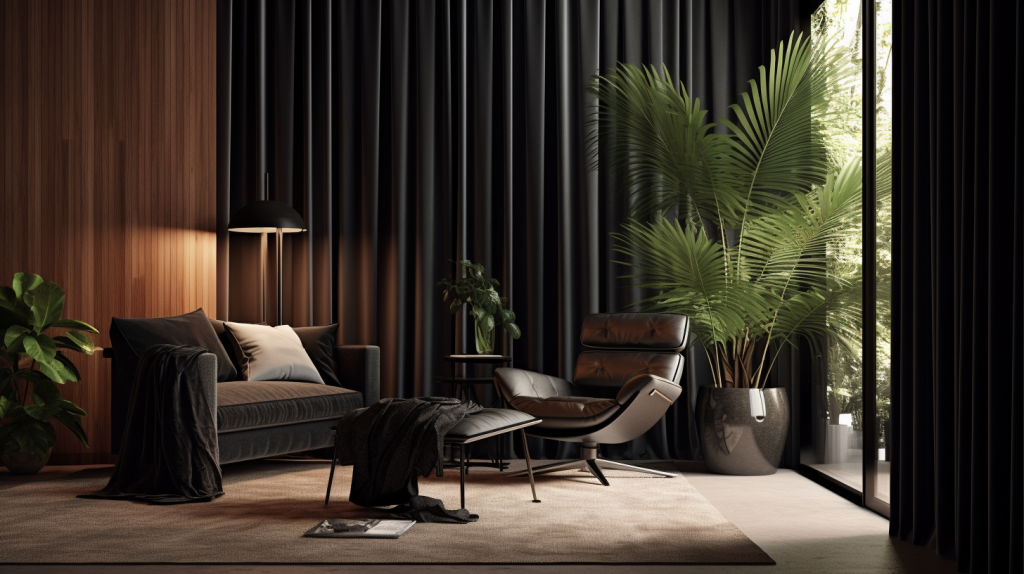Ah, velvet curtains! There’s something about them, isn’t there? They exude opulence, luxury, and an old-world charm. But did you know the magic behind the scenes is just as essential? Yes, we’re talking about the lining. The right lining can elevate your velvet curtain experience, ensuring it’s not just about looks, but functionality too. But what is the best lining for velvet curtains? Drum roll, please! Let’s unveil this mystery.
Contents
- 1 Why Line Velvet Curtains in the First Place?
- 2 Cotton Lining: The Classic
- 3 Thermal Lining: For Insulation Pros
- 4 Blackout Lining: Night Owls, Rejoice!
- 5 Silk Lining: Luxe Upon Luxe
- 6 Interlining: A Hidden Gem
- 7 Polyester and Cotton Blend: Best of Both Worlds
- 8 Voile Lining: For the Light Lovers
- 9 Acoustic Lining: Silence is Golden
- 10 Choosing the Right Lining: Factors to Consider
- 11 Maintaining Lined Velvet Curtains
- 12 Should Velvet Curtains Be Lined?
- 13 In Conclusion
- 14 FAQs
Why Line Velvet Curtains in the First Place?
Before we dive deep into our quest, let’s understand the why. The lining protects the velvet fabric from dust, sun, and moisture. It’s like the shield guarding a warrior, allowing the velvet to shine in all its glory for years.
Cotton Lining: The Classic
This is your no-fuss, reliable friend. It helps shield the velvet, offers a bit of insulation, and gives a neat finish. Cotton lining is also budget-friendly. However, while it’s wonderful, it might not be the superhero when it comes to heavy-duty protection against light or temperature.
Thermal Lining: For Insulation Pros
Feel that chill during winter or the searing heat in summer? Thermal linings come to the rescue! They provide an extra layer of insulation, helping to regulate room temperature. Your velvet curtain paired with this lining acts as a barrier, ensuring your room remains just the way you want it.
Blackout Lining: Night Owls, Rejoice!
Ever felt like the sun’s playing peek-a-boo when you’re trying to sleep in? Blackout linings block out nearly all external light, making them perfect for bedrooms or that home cinema experience. Plus, they offer excellent insulation. Double win, right?
Silk Lining: Luxe Upon Luxe
Imagine the grandeur of velvet met with the soft whisper of silk. Silk linings, while on the pricier side, elevate the luxury quotient. They’re best suited for rooms where elegance takes center stage.
Interlining: A Hidden Gem
Think of this as the sandwich filling between your velvet curtain and its lining. Made of a fluffy cotton material, it provides added insulation, thickness, and an enhanced drape. Especially for rooms with draughts or older windows, this one’s a game-changer.
Polyester and Cotton Blend: Best of Both Worlds
Seeking durability with a touch of natural feel? This blend offers it. It’s resistant to wrinkles, shrinkage, and even mildew, making it a versatile choice.
Voile Lining: For the Light Lovers
Not a fan of dark rooms? Voile lining is sheer, allowing a diffused light to filter through. It’s perfect for living spaces where you’d love some sunlight without compromising on privacy.
Acoustic Lining: Silence is Golden
Located near a busy street or just want a peaceful indoor environment? Acoustic linings are designed to reduce noise. Your velvet curtains will not only look good but keep the hustle and bustle at bay.
Choosing the Right Lining: Factors to Consider
Your choice will be influenced by the room’s purpose, your aesthetic preference, budget, and climatic conditions. So, it’s essential to weigh the pros and cons before settling.
Maintaining Lined Velvet Curtains
A well-chosen lining can last years. Regular dusting, gentle vacuuming, and occasional professional cleaning will ensure your curtains remain the room’s star.
Should Velvet Curtains Be Lined?
Absolutely, lining velvet curtains is highly recommended for a few compelling reasons:
- Protection from Sunlight: The lining provides an added layer of protection against direct sunlight, which can cause the velvet to fade over time.
- Enhanced Insulation: A lining can offer better insulation, helping to maintain a room’s temperature. This means keeping the warmth in during the colder months and keeping heat out during the summer.
- Increased Durability: The lining reduces the strain on the velvet fabric, thereby extending the lifespan of the curtains.
- Improved Opacity: Lining velvet curtains makes them denser, providing more privacy and better light blockage, which is particularly useful in bedrooms or any space where one might want to reduce external light.
- Enhanced Aesthetics: A lined velvet curtain often hangs better and looks more sumptuous and luxurious due to the added weight and thickness.
In Conclusion
Velvet curtains are indeed a thing of beauty, but with the right lining, they transform into functional masterpieces. Whether it’s the silky embrace of silk, the robustness of cotton, or the darkness offered by blackout linings, each brings its own magic. So, when someone asks, “What is the best lining for velvet curtains?” you know it’s not just about one answer, but the symphony of choices available.
FAQs
Can I add lining to my existing velvet curtains?
Absolutely! A professional can help retrofit a lining of your choice to your curtains.
Is there a significant price variation between different linings?
Yes, natural fibers like silk tend to be pricier compared to synthetic options like polyester.
Can lined curtains help in energy conservation?
Definitely. Thermal and blackout linings, in particular, offer excellent insulation, potentially reducing heating and cooling costs.
Are lined curtains harder to maintain?
Not necessarily. Most linings just add an extra step in cleaning, but with regular care, they’ll serve you well for years.
Do lined curtains drape differently?
Yes, a lining can add body and fullness to your velvet curtains, enhancing their drape and appearance.

